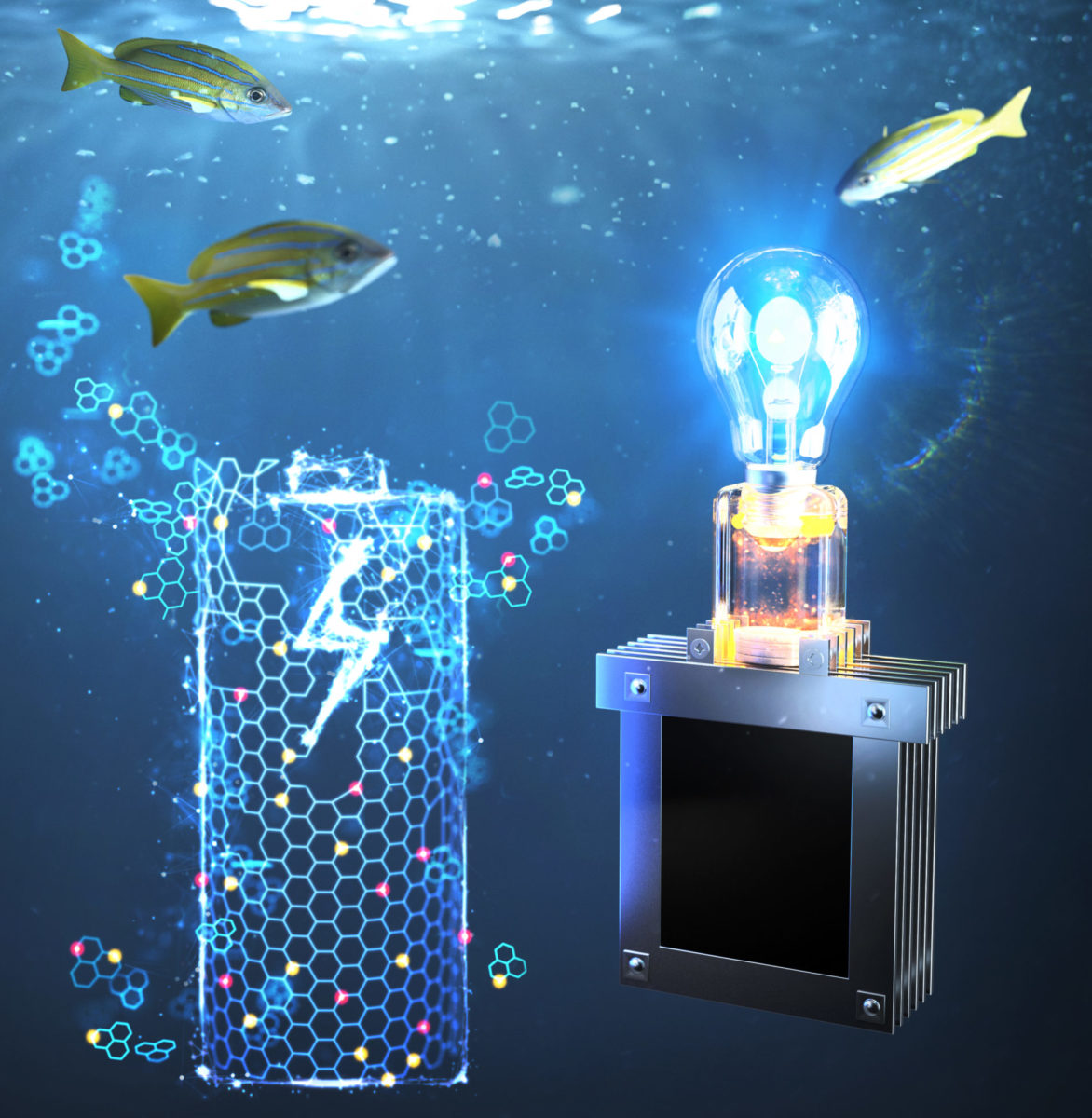One particularly promising type of sodium-based battery technology are seawater batteries (SWBs), which use seawater as the cathode. Despite their numerous potential applications, the commercialization of SWBs has been hampered by the lack of low-cost, high-performance and environmentally friendly anode materials.
Whereas traditional carbon-based materials are a cost-efficient option, their electrochemical performance is below par so they have to be co-doped with multiple elements, such as nitrogen (N) and sulfur (S). Another issue is that currently known synthesis routes for co-doping are complex, potentially dangerous, and even unable to yield acceptable doping levels.
Now, a team of scientists from Korea Maritime and Ocean University has managed to overcome the complexity of synthesis and safety issues caused by harmful dopant precursor via a new synthesis route. They developed a one-step plasma-in-liquid process to synthesize N and S co-doped carbon-based anode material, which displayed great potential for seawater batteries.
Their process involved preparing a mixture of precursors containing carbon, N, and S and discharging plasma into the solution, resulting in a material with high doping levels of N and S with a structural backbone of carbon black. “The co-doped anode material we prepared exhibited remarkable electrochemical performance in SWBs, with a cycling life of more than 1500 cycles at a current density of 10 A/g,” Associate Professor Jun Kang said.
Namely, the NS/C anode created in this way even allowed seawater batteries to outperform lithium-ion batteries, making them a sustainable alternative to the ubiquitous battery technology. The material exhibits a large specific surface area (476.8 m2 g−1) and abundant active sites on its surface owing to its void structure. It has high initial coulombic efficiency of 84%. When the anode is applied to a sodium-ion half-cell, NS/C showed a remarkable cycling life of 35,000 cycles at an ultrahigh current density of 100 A g−1 with high reversible capacity of >72 mAh g−1.
Popular content
“Owing to the advantages of this structure, NS/C evidently caused a co-intercalation reaction in an ether-based electrolyte while avoiding solid electrolyte interface (SEI) layer formation on the anode surface,” the researchers wrote in their paper Facile in situ synthesis of dual-heteroatom-doped high-rate capability carbon anode for rechargeable seawater batteries, recently published in Carbon.
The potential maritime applications of SWBs are versatile, since they can be safely operated while completely submerged in seawater. They can be used to supply emergency power in coastal nuclear power plants or be installed on buoys to aid in navigation and fishing. But as Kang explains, seawater batteries can be most powerful when used in conjunction with renewable energy such as solar power.
“In other words, if renewable energy is used to charge the seawater battery, it can be the cleanest energy storage device,” Kang tells pv magazine. “Specifically, in the case of buoys for navigation signs, power is supplied using lead-acid batteries. However, lead-acid batteries are weak against corrosion, so their durability is very poor. In Korea, products that replace these lead-acid batteries with seawater batteries are being developed, and solar power is being used as an energy source to charge seawater batteries.”
Finally, seawater batteries can be installed as a power source for salvage equipment on passenger ships. “They would not only supply a higher energy density than conventional primary batteries, but also enable stable operation in water, thereby increasing survival probabilities,” Kang says.
This content is protected by copyright and may not be reused. If you want to cooperate with us and would like to reuse some of our content, please contact: editors@pv-magazine.com.



By submitting this form you agree to pv magazine using your data for the purposes of publishing your comment.
Your personal data will only be disclosed or otherwise transmitted to third parties for the purposes of spam filtering or if this is necessary for technical maintenance of the website. Any other transfer to third parties will not take place unless this is justified on the basis of applicable data protection regulations or if pv magazine is legally obliged to do so.
You may revoke this consent at any time with effect for the future, in which case your personal data will be deleted immediately. Otherwise, your data will be deleted if pv magazine has processed your request or the purpose of data storage is fulfilled.
Further information on data privacy can be found in our Data Protection Policy.